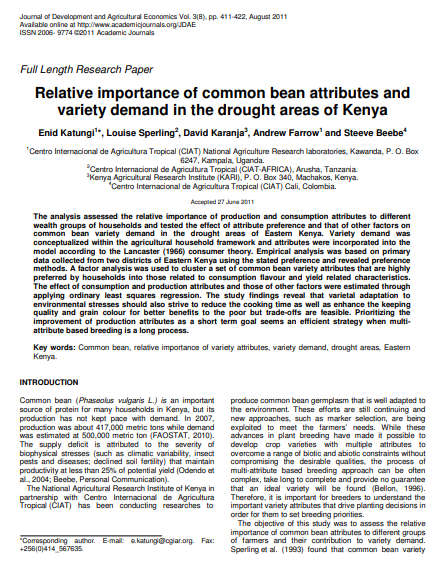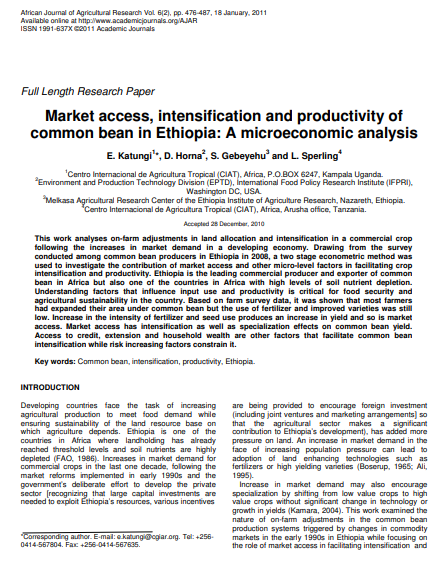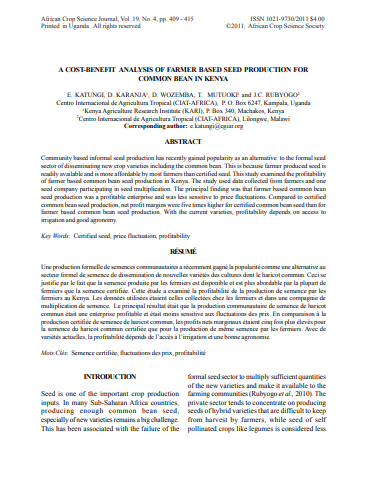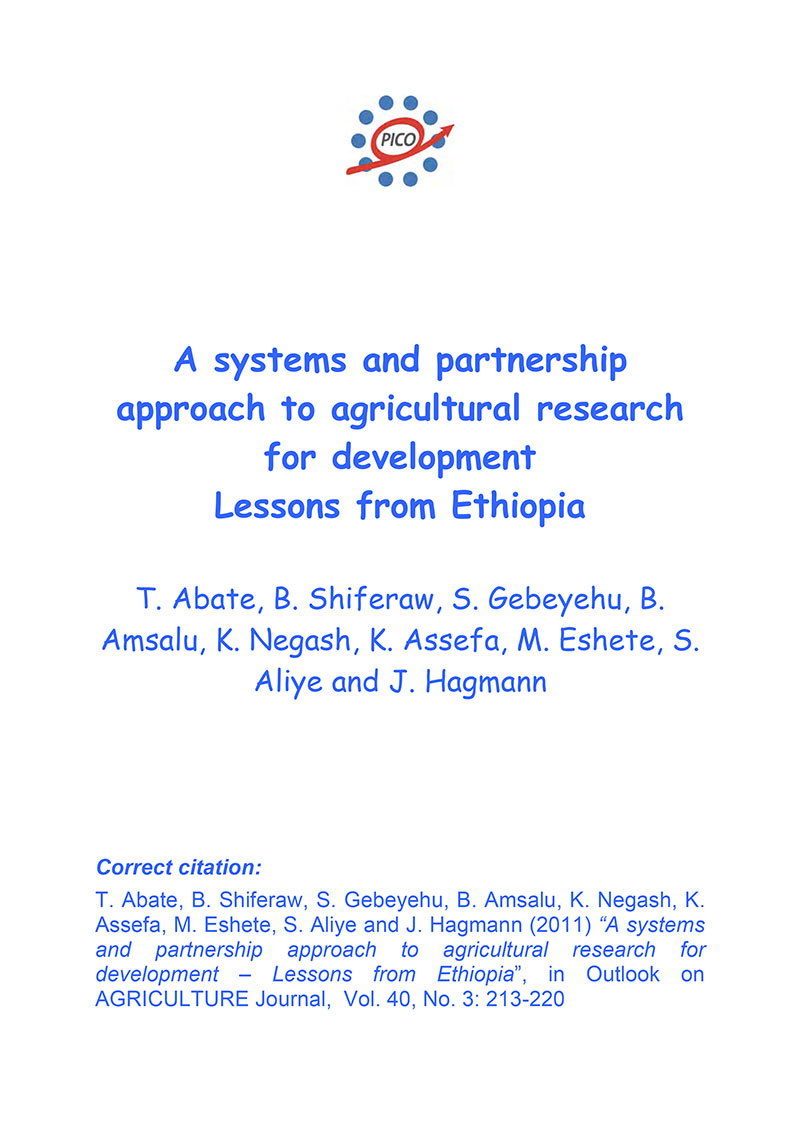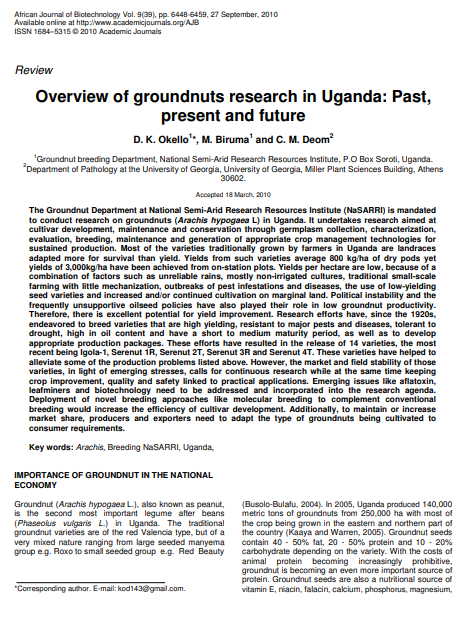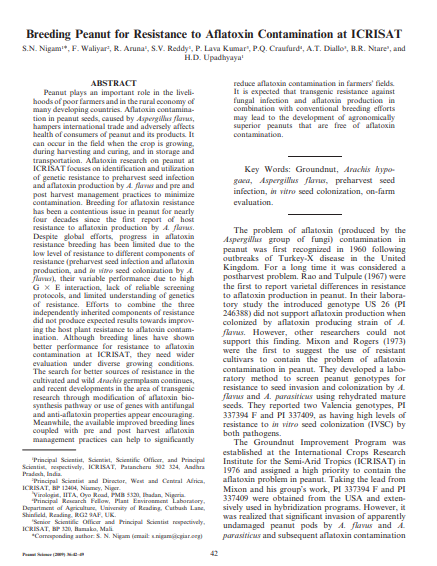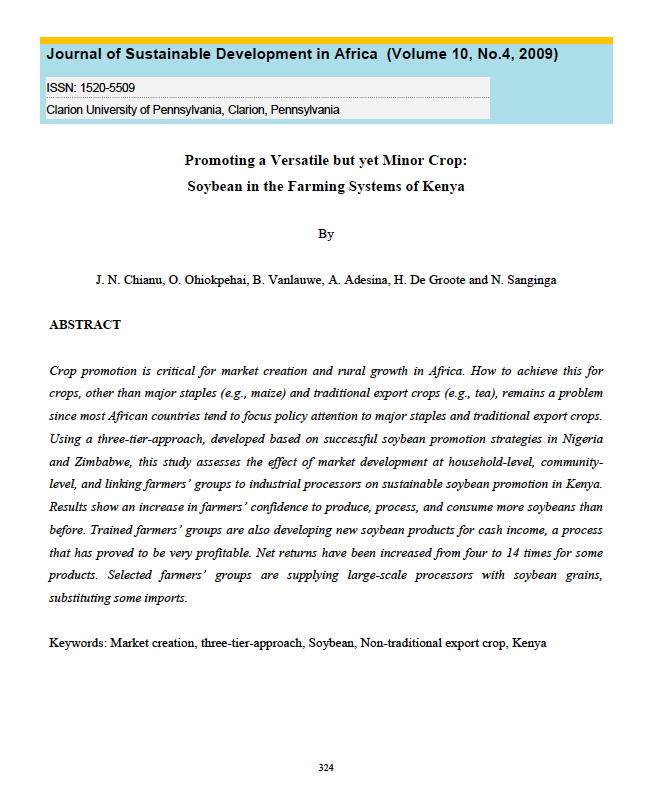Relative importance of common bean attributes and variety demand in the drought areas of Kenya
The findings presented in this study reveal that varietal adaptation to environmental stresses should also strive to reduce cooking time, as well as enhance keeping quality and grain color to improve benefits for the poor. The study argues that prioritizing the improvement of production attributes as a short-term goal seems an efficient strategy when multi-attribute based breeding is a long process.
Project: TLII
File type: PDF (144.12 KB)
Market access, intensification and productivity of common bean in Ethiopia: a microeconomic analysis
This study attempts to understand the factors that influence input use and productivity during the cultivation of common bean in Ethiopia, critical for food security and agricultural sustainability.
Project: TLII
File type: PDF (229.06 KB)
A cost-benefit analysis of farmer-based seed production for common bean in Kenya
This study examined the profitability of farmer-based common bean seed production in Kenya. The principal finding was that farmer-based common bean seed production was a profitable enterprise and was less sensitive to price fluctuations.
Project: TLII
File type: PDF (39.09 KB)
Characterization of drought-tolerance traits in nodulated soya beans: the importance of maintaining photosynthesis and shoot biomass under drought-induced limitations on Nitrogen metabolism
This study identified phenotypic markers for enhanced drought tolerance in nodulated soya beans. Leaf and nodule parameters were compared in three genotypes: Prima 2000, glyphosate‐resistant A5409RG, and Jackson.
Project: TLII
File type: PDF
Genetic gain in yield and agronomic characteristics of cowpea cultivars developed in the Sudan Savannas of Nigeria over the past three decades
This paper evaluates a field study conducted to determine the rate of genetic improvement in grain and fodder yields and associated agronomic and physiological changes of determinate and semi-determinate cowpea genotypes developed in the Nigerian Sudan savannas from 1974 to 2004.
Project: TLII
File type: PDF
Phosphorus and Nitrogen fertilization of soybean in the Nigerian Savanna
The objective of this research was to determine the interactive effect of N and P on soybean productivity in the northern Guinea and Sudan savannas of northeast Nigeria. The results suggest that N fertilizer is not critical for soybean production in this area.
Project: TLII
File type: PDF
A systems and partnership approach to agricultural research for development – Lessons from Ethiopia
A paper presenting a methodology based on the innovation systems approach that has been used in Ethiopia to facilitate agricultural innovations and the diffusion of new technologies, illustrated with experiences in scaling up three grain legumes.
Project: TLII
File type: External site
Overview of groundnut research in Uganda: past, present and future
This study provides an overview of research undertaken by the groundnut department at the National Semi-Arid Research Resources Institute (NaSARRI) which targets cultivar development, maintenance and conservation through germplasm collection, characterization, evaluation, breeding, maintenance and the generation of appropriate crop management technologies for sustained production.
Project: TLII
File type: PDF (133.52 KB)
Breeding peanut for resistance to Aflatoxin contamination at ICRISAT
The research presented in this paper suggests that transgenic resistance against fungal infection and aflatoxin production in combination with conventional breeding efforts may lead to the development of agronomically superior peanuts that are free of aflatoxin contamination.
Project: TLII
File type: PDF (140.77 KB)
Promoting a versatile but yet minor crop: Soybean in the farming systems of Kenya
Using a three-tier-approach based on successful soybean promotion strategies, this study assesses the effect of market development at household-level, community-level, and linking farmers’ groups to industrial processors on sustainable soybean promotion in Kenya.
Project: TLII
File type: PDF (65.82 KB)


